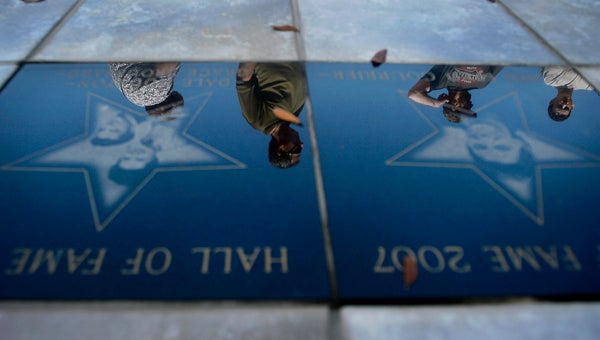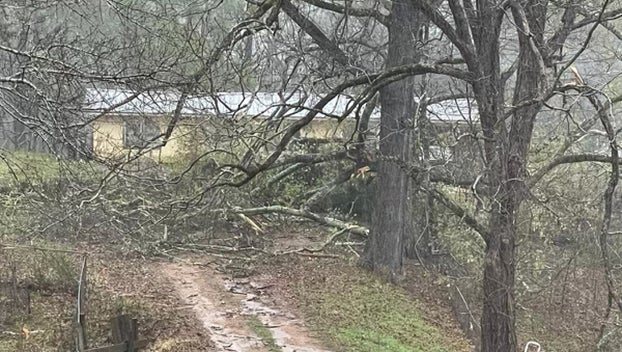Isaac spins into New Orleans on slow slog inland
Published 1:23 pm Wednesday, August 29, 2012
NEW ORLEANS (AP) — Hurricane Isaac began a slow, drenching slog inland from the Gulf of Mexico on Wednesday, pushing water over a rural Louisiana levee and stranding some people in homes and cars as the storm spun into a newly fortified New Orleans exactly seven years after Katrina.
Although Isaac was much weaker than the 2005 hurricane that crippled the city, the threat of dangerous storm surges and flooding from heavy rain was expected to last all day and into the night as the immense comma-shaped storm crawled across Louisiana.
Army Corps spokeswoman Rachel Rodi said the city’s bigger, stronger levees were withstanding the assault.
“The system is performing as intended, as we expected,” she said. “We don’t see any issues with the hurricane system at this point.”
There were initial problems with pumps not working at the 17th Street Canal, the site of a breach on the day Katrina struck, but those pumps had been fixed, Rodi said.
Rescuers in boats and trucks plucked a handful of people who became stranded by floodwaters in thinly populated areas of southeast Louisiana. Authorities feared many more could need help after a night of slashing rain and fierce winds that knocked out power to more than 600,000 households and businesses.
The extent of the damage was not entirely clear because officials did not want to send emergency crews into harm’s way. In Plaquemines Parish, a fishing community south of New Orleans, about two dozen people who stayed behind despite evacuation orders needed to be rescued.
“I think a lot of people were caught with their pants down,” said Jerry Larpenter, sheriff in nearby Terrebonne Parish. “This storm was never predicted right since it entered the Gulf. It was supposed to go to Florida, Panama City, Biloxi, New Orleans. We hope it loses its punch once it comes in all the way.”
As Isaac’s eye Isaac passed overhead, authorities in armored vehicles saved a family whose roof was ripped off, Larpenter said.
Two police officers had to be rescued by boat after their car became stuck. Rescuers were waiting for the strong winds to die down before moving out to search for other people.
“The winds are too strong and the rain too strong,” Plaquemines Parish spokeswoman Caitlin Campbell said.
Water driven by the large and powerful storm flooded over an 18-mile stretch of one levee in Plaquemines Parish. The levee, one of many across the low-lying coastal zone, is not part of the new defenses constructed in New Orleans after Katrina.
Louisiana Gov. Bobby Jindal said officials may intentionally break a levee on the east bank of Plaquemines Parish to relieve pressure on the structure. At a news conference in Baton Rouge, Jindal said there was no estimate on when that might occur.
He said as many as 40 people are reportedly in need of rescue in the area.
Plaquemines Parish has also ordered a mandatory evacuation for the west bank of the Mississippi River below Belle Chasse, worried about a storm surge. The order affects about 3,000 people in the area, including a nursing home with 112 residents.
Officials said the evacuation was ordered out of concern that more storm surge from Isaac would be pushed into the area and levees might be overtopped.
Isaac was packing 75 mph winds Wednesday, making it a Category 1 hurricane. It came ashore at 7:45 p.m. EDT Tuesday with 80 mph winds near the mouth of the Mississippi River, driving a wall of water nearly 11 feet high inland and soaking a neck of land that stretches into the Gulf.
The storm stalled for several hours before resuming a slow trek inland, and forecasters said that was in keeping with the its erratic history. The slow motion over land means Isaac could be a major soaker, dumping up to 20 inches of rain in some areas. But every system is different.
“It’s totally up to the storm,” said Ken Graham, chief meteorologist at the National Weather Service in Slidell, La.
Isaac’s winds and sheets of rain whipped New Orleans, where forecasters said the city’s skyscrapers could be subject to gusts up to 100 mph.
In the French Quarter near Bourbon Street, Jimmy Maiuri stepped outside his second-floor apartment to shoot video. Maiuri, who fled from Katrina at the last minute, stayed behind this time and had no regrets, though he was amazed at the storm’s timing.
“It’s definitely not one to take lightly, but it’s not Katrina,” he said. “No one is going to forget Aug. 29 forever, not here at least.”
As hard wind and heavy rain pelted Melba Leggett-Barnes’ home in the Lower 9th Ward, an area leveled during Katrina, she felt more secure than she did seven years ago.
“I have a hurricane house this time,” said Barnes, who has been living in her newly rebuilt since 2008. She and her husband, Baxter Barnes, were among the first to get a home through Brad Pitt’s Make It Right program.
Her yellow house with a large porch and iron trellis was taking a beating, but holding strong. “I don’t have power, but I’m all right,” said Barnes, 56, a cafeteria worker for the New Orleans school system.
In Mississippi, the main highway that runs along the Gulf, U.S. 90, was closed in sections by storm surge flooding. At one spot in Biloxi, a foot of water covered the highway for a couple of blocks, and it looked like more was coming in. High tide was likely to bring more water.
In Pass Christian, a Mississippi coastal community wiped out by hurricanes Camille and Katrina, Mayor Chipper McDermott was optimistic Isaac would not deal a heavy blow.
“It’s not too bad, but the whole coast is going to be a mess,” he said.
McDermott stood on the porch of the $6 million municipal complex built after Katrina, with walls of 12-inch-thick concrete to withstand hurricane winds. As he looked out toward the Gulf of Mexico, pieces of a structure that had stood atop the city’s fishing pier washed across the parking lot.
Tens of thousands of people had been told ahead of Isaac to leave low-lying areas of Mississippi and Louisiana, including 700 patients of Louisiana nursing homes. Mississippi shut down the state’s 12 shorefront casinos.
The hurricane also canceled commemoration ceremonies Wednesday for Katrina’s 1,800 dead in Louisiana and Mississippi.
The storm drew attention because of its timing __ coinciding with the Katrina anniversary and the first major speeches of the Republican National Convention in Tampa, Fla.
Isaac promised to test a New Orleans levee system bolstered by $14 billion in federal repairs and improvements after the catastrophic failures during Katrina. But in a city that has already weathered Hurricane Gustav in 2008.
Isaac also posed political challenges with echoes of those that followed Katrina, a reminder of how the storm became a symbol of government ineptitude.
President Barack Obama sought to demonstrate his ability to guide the nation through a natural disaster, and Republicans tried to reassure residents as they formally nominated former Massachusetts Gov. Mitt Romney as their presidential candidate.
There was already simmering political fallout from the storm. Louisiana’s Republican Gov. Bobby Jindal, who canceled his trip to the convention in Tampa, said the Obama administration’s disaster declaration fell short of the federal help he had requested. Jindal said he wanted a promise from the federal government to be reimbursed for storm preparation costs.
FEMA Administrator Craig Fugate said such requests would be addressed after the storm.
Along the Gulf coast east of New Orleans, veterans of past hurricanes made sure to take precautions.
Bonnie Schertler of Waveland, Miss., lost her home during Katrina. After hearing forecasts that Isaac could get stronger and stall, she decided to evacuate to her father’s home in Red Level, Ala.
A slow storm can cause “a lot more havoc,” she said, “because it can knock down just virtually everything” if it hovers long enough.






